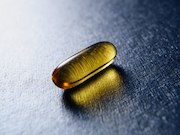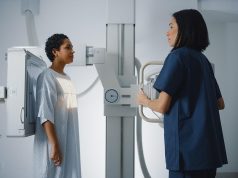Pooled analysis finds levels ≥60 ng/mL are most protective among women aged 55 years and older
FRIDAY, July 13, 2018 (HealthDay News) — Higher levels of vitamin D may be protective against breast cancer, according to a study published online June 15 in PLOS ONE.
Sharon L. McDonnell, M.P.H., from GrassrootsHealth in Encinitas, Calif., and colleagues examined the relationship between 25-hydroxyvitamin D (25[OH]D concentration and breast cancer risk across a broad range of 25(OH)D concentrations (<20 to ≥60 ng/mL) among women aged 55 years and older participating in three previous studies (pooled cohort, 5,038 participants).
The researchers found that 77 women were diagnosed with breast cancer (age-adjusted incidence: 512 cases per 100,000 person-years). There was an 82 percent lower incidence rate of breast cancer for women with 25(OH)D concentrations ≥60 versus <20 ng/mL (rate ratio [RR], 0.18; P = 0.006). Kaplan-Meier curves for concentrations of <20, 20 to 39, 40 to 59, and ≥60 ng/mL were significantly different, with the highest proportion of breast cancer-free participants in the ≥60 ng/mL group (99.3 percent) and the lowest proportion of breast cancer-free participants in the <20 ng/mL group (96.8 percent) (P = 0.02). When adjusting for age, body mass index, smoking status, calcium supplement intake, and study of origin, women with 25(OH)D concentrations ≥60 ng/mL had an 80 percent lower risk of breast cancer than women with concentrations <20 ng/mL (hazard ratio, 0.20; P = 0.03).
“Higher 25(OH)D concentrations were associated with a dose-response decrease in breast cancer risk, with concentrations ≥60 ng/mL being most protective,” the authors write.
Bio-Tech Pharmacal, Pure North S’Energy Foundation, and the Vitamin D Society funded the study.
Copyright © 2018 HealthDay. All rights reserved.








